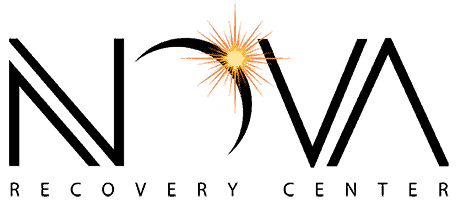Medication‑Assisted Treatment reduces cravings and eases withdrawal. It protects progress while you build new skills in therapy. At Nova, MAT is never a stand‑alone fix. It’s part of a complete plan designed for long‑term recovery.
Nova Recovery Center
OUR TREATMENT PROGRAMS
Withdrawal can be life-threatening without medical care. We monitor vital signs and use medications when needed to reduce symptoms and complications.
Opiates & Opioids
From prescription painkillers to illicit opioids like fentanyl, our MAT programs help manage physical dependence and intense cravings.
Benzodiazepines
Stopping medications like Xanax, Valium, and Ativan slowly with a doctor’s help is important. Stopping suddenly can lead to seizures and more anxiety.
Cocaine
While not physically addictive in the same way as opioids, treatment for cocaine requires emotional and psychological stabilization.
Our compassionate team provides 24/7 support during heroin withdrawal, using medications and therapy to reduce discomfort and promote stability.
Methamphetamine
Meth detox can cause extreme fatigue, depression, and anxiety. We help ease these symptoms in a structured, supportive setting.
Prescription Drugs
We assist individuals taking medications such as Adderall, Ambien, or painkillers, concentrating on their physical symptoms and psychological well-being through addiction rehab for prescription drugs.
Synthetic Drugs
Addiction recovery from synthetic cannabinoids, bath salts, or designer stimulants is managed with careful observation and individualized treatment plans.
Medications we may use (individualized)
Buprenorphine
To reduce opioid cravings and withdrawal.
Naltrexone
For opioids or alcohol, to block effects and support abstinence.
Acamprosate
For alcohol, to support brain balance in early recovery.
Methadone
If Methadone is clinically appropriate, we coordinate with local OTPs per federal rules.
At Nova, our medical providers may use buprenorphine or naltrexone during detox and stabilization; methadone may be used when appropriate under medical supervision. Care is individualized and paired with therapy.
Nova Recovery Center
How MAT works here (step‑by‑step)
Assessment and safety
We review history, goals, and current symptoms.
Start or adjust medication.
Dosing is individualized and reviewed often.
Therapy + skills.
Groups and 1:1 sessions reinforce relapse‑prevention.
Track and refine.
We monitor progress, side effects, and next steps.
Aftercare.
Alumni, peer support, and step‑down keep momentum strong.
LEARN MORE ABOUT WHAT
WE HAVE TO OFFER!
More Time. More Joy. More You. Start Now.
WE ACCEPT MOST INSURANCES







Helpful links
Outpatient Program Overview (IOP)
Intensive Outpatient Houston
About Medication Assisted Treatment
Verify Insurance for MAT
Frequently Asked Questions (FAQ)
Medication‑assisted treatment (also called MOUD when treating opioid use disorder) combines FDA‑approved medications with counseling and behavioral therapies to treat the “whole person.” It helps normalize brain chemistry, reduce cravings and withdrawal, and improve retention in care.
For opioid use disorder, methadone and buprenorphine activate opioid receptors in a controlled, therapeutic way; naltrexone blocks them. These medications reduce withdrawal and cravings and lower the risk of relapse and overdose when taken as prescribed.
Three: buprenorphine, methadone, and naltrexone. All are proven safe and effective when paired with appropriate care.
Three: naltrexone, acamprosate, and disulfiram. They’re often used alongside counseling and mutual‑support to improve outcomes.
No. High‑quality studies show methadone and buprenorphine cut overdose deaths and reduce acute care use compared with non‑medication approaches. MAT stabilizes physiology; it doesn’t substitute one addiction for another.
There’s no fixed time limit; people should continue medication as long as it’s beneficial. Arbitrary stop dates increase relapse and overdose risk. Decisions to taper should be individualized and closely monitored.
Yes—buprenorphine or methadone are recommended in pregnancy; breastfeeding is generally encouraged if there’s no ongoing illicit use. Care is individualized with your OB‑GYN.
Yes. Evidence supports methadone and buprenorphine in the fentanyl era; some patients may need higher buprenorphine doses or careful inductions to avoid precipitated withdrawal.
Yes. Buprenorphine can be prescribed in office‑based settings; methadone for OUD is dispensed through certified Opioid Treatment Programs (OTPs). Texas HHS also supports MAT access statewide.
IOP is a structured level of care typically providing about 9–19 hours/week of counseling and skills work, designed to fit around work or school while maintaining clinical intensity.
Yes—medication works best alongside counseling, recovery skills, and supportive services. This combination is the standard of care.
Most plans do. Medicaid and Medicare must cover MOUD, and Texas programs/initiatives can help connect residents to care; private plans generally cover SUD treatment under parity rules. Always verify your benefits.
Texas HHS and partner programs (e.g., Texas Targeted Opioid Response/Be Well Texas) expand access and can help connect you with affordable services.
Nova provides MAT evaluations and, when clinically appropriate, office‑based medications such as buprenorphine or naltrexone, integrated with counseling and step‑down care. For methadone, we coordinate with local OTPs as required by federal rules. (Program details belong to your page copy; methadone must be dispensed by an OTP.)
Yes. Starting buprenorphine in the ED increases engagement in addiction treatment, and patients can transition to outpatient care.
There are no FDA‑approved medications for stimulant (cocaine/methamphetamine) use disorders; care focuses on behavioral therapies and contingency management. For benzodiazepines, doctor‑supervised tapering, not MAT, is recommended.
Naloxone rapidly reverses an opioid overdose; it’s emergency, short‑acting, and now available OTC. Naltrexone is a longer‑acting blocker used for relapse prevention in OUD and AUD, after detox. Keep naloxone on hand if you or a loved one uses opioids.
Most clients step down to IOP, continue medication management, add family/individual therapy, and—if helpful—enter sober living/recovery housing for structure and accountability.
Yes. Methadone and buprenorphine significantly reduce overdose and all‑cause mortality and improve retention compared with non‑medication treatment.
Use the Verify Insurance form on the site or call. If you’re uninsured, we can still help you review Medicaid/Medicare options and Texas resources (e.g., TTOR/Be Well Texas).

